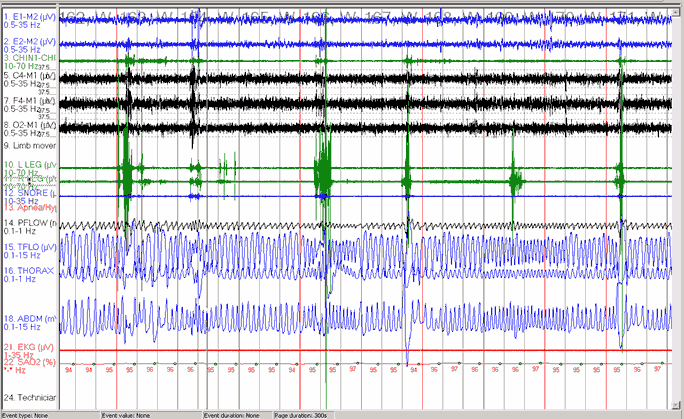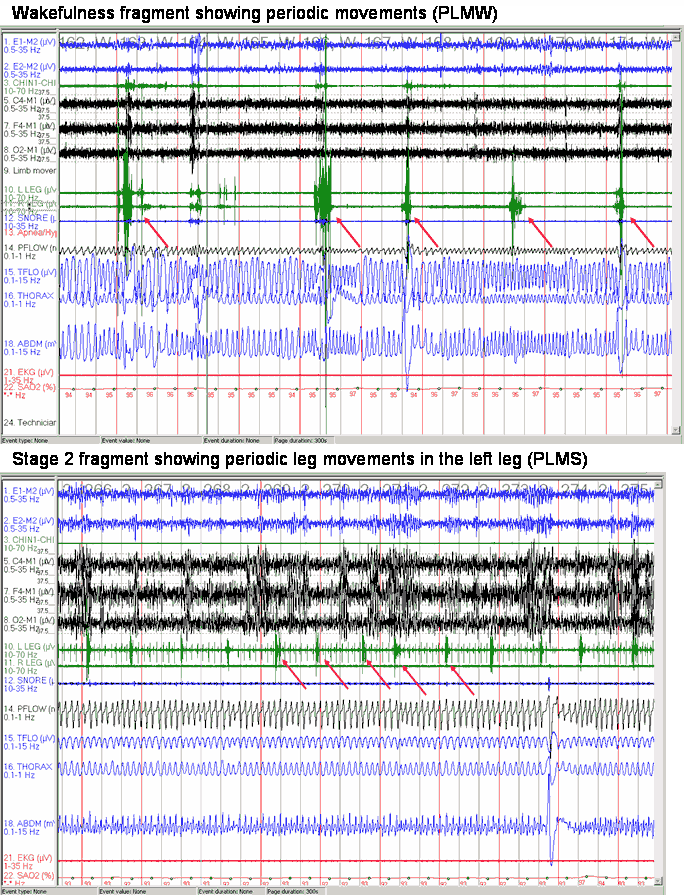Contributed by James A. Rowley, MD, Wayne State University, Detroit, MI
A 37 year old is referred for sleep study from the sarcoidosis clinic for poor sleep, snoring, nocturnal choking and daytime sleepiness. Shown is a 5 minute fragment from wakefulness, obtained at the beginning of the sleep study. What sleep disorder is suggested by the fragment?
The fragment shows multiple leg movements during wakefulness (see arrows) which is suggestive of restless leg syndrome. Periodic leg movements during wakefulness (PLMW) have been shown in one study to be a sensitive (87%) and specific (80%) marker of RLS; other parameters, such as the periodic limb movement index during sleep, were not discriminatory.
The second fragment shown below is a 5 minute fragment from the same patient obtained during Stage 2 sleep; note the periodic leg movements (see arrows). PLMs are seen in approximately 80% of patients with RLS and are supportive features of a diagnosis of RLS if the one or more of the four characteristic features are not present or not classic.
Restless leg syndrome is primarily a clinical diagnosis, not requiring polysomnography to confirm. The diagnosis is generally made if the following characteristic features are present:
- An urge to move, usually due to uncomfortable sensations (described as creeping, crawling, aching), primarily in the legs.
- Urge to move partially/totally relieved by movements (walking/stretching).
- Worsening of symptoms by relaxation; improved if move legs.
- Day to day variability but generally worse in evening and early in the night.
Besides PLMS and PLMW, another important supportive feature is a family history of RLS.
Note: this patient showed no significant sleep disordered breathing (AHI 2.2/hr). She will be referred to the sleep clinic for further evaluation by a sleep physician. If she describes symptoms consistent with RLS, treatment with a dopamine agonist, such as pramipexole or ropirinole, would be indicated.
References
Michaud M, et al. Sleep laboratory diagnosis of restless leg syndrome. Eur Neurol 2002; 48:108-113.
Gamaldo CE, Earley CJ. Restless leg syndrome: a clinical update. Chest 2006; 130:1596-1604.





